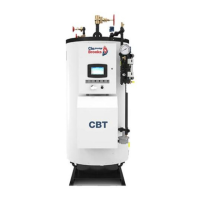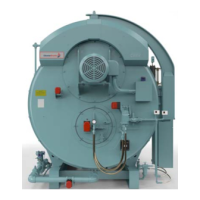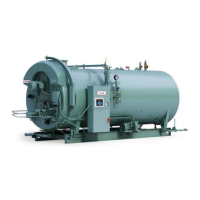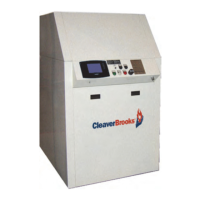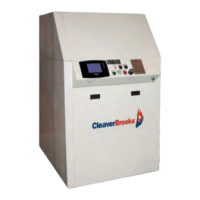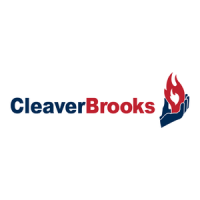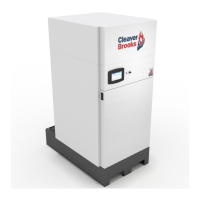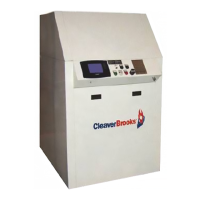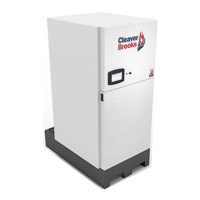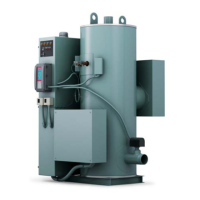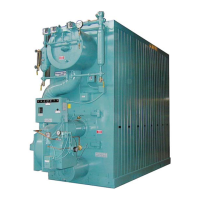Waterside Care and Requirements
3-10
750-91 (revised 2009)
Model CB-LE Packaged Boiler Manual
3.7 — Washing Out
3.7.1 — Hot Water Boiler
In theory, a hot water system and boiler that has been initially cleaned, filled with raw water (and water treated), and
with no make-up water added, will require no further cleaning or treatment. However, since the system (new or
old) can allow entrance of air and unnoticed or undetected leakage of water, introductions of raw water make-up or
air may lead to pitting, corrosion, and formation of sludge, sediment, scale, etc. on the pressure vessel waterside.
If the operator is absolutely certain that the system is tight, then an annual waterside inspection may be sufficient.
However, if there is any doubt, the pressure vessel waterside should be inspected no later than three months after
initially placing the boiler into operation, and periodically thereafter as indicated by conditions observed during
inspections.
3.7.2 — Steam Boiler
No later than three months after initially placing the boiler into operation and starting service, and thereafter as
conditions warrant, the pressure vessel should be drained after being properly cooled to near ambient temperature.
Handhole covers should be removed and waterside surfaces should be inspected for corrosion, pitting, or forma-
tion of deposits.
3.7.3 — Flushing of Pressure Vessel Interior
Upon completion of the inspection, the pressure vessel interior should be flushed out, as required, with a high
pressure hose. If deposits are not fully removed by flushing, a consultation may be required with your local Cleaver-
Brooks authorized representative. In extreme cases, it may be necessary to resort to acid cleaning. Professional
advice is recommended if acid cleaning is required.
The inspections will indicate the effectiveness of the feedwater treatment. The effectiveness of treatment, the water
conditions, and the amount of fresh water make-up required are all factors to be considered in establishing fre-
quency of future pressure vessel washouts. Contact your local Cleaver-Brooks authorized representative for more
information.
3.8 — Blowdown: Steam Boiler
Boiler water blowdown is the removal of some of the concentrated water from the pressure vessel and its replace-
ment with feedwater so that the lowering of the concentration of solids in the boiler water occurs.
Solids are brought in by the feedwater even though the water is treated prior to use through external processes that
are designed to remove unwanted substances which contribute to scale and deposit formations. However, none of
the processes can remove all substances. Regardless of their high efficiency, some solids will be present in the boiler
feedwater.
Solids become less soluble in the high temperature of the boiler water and tend to accumulate on heating surfaces.
Therefore, blowdown and internal chemical treatment are required to prevent the solids from forming harmful
scale and sludge.
